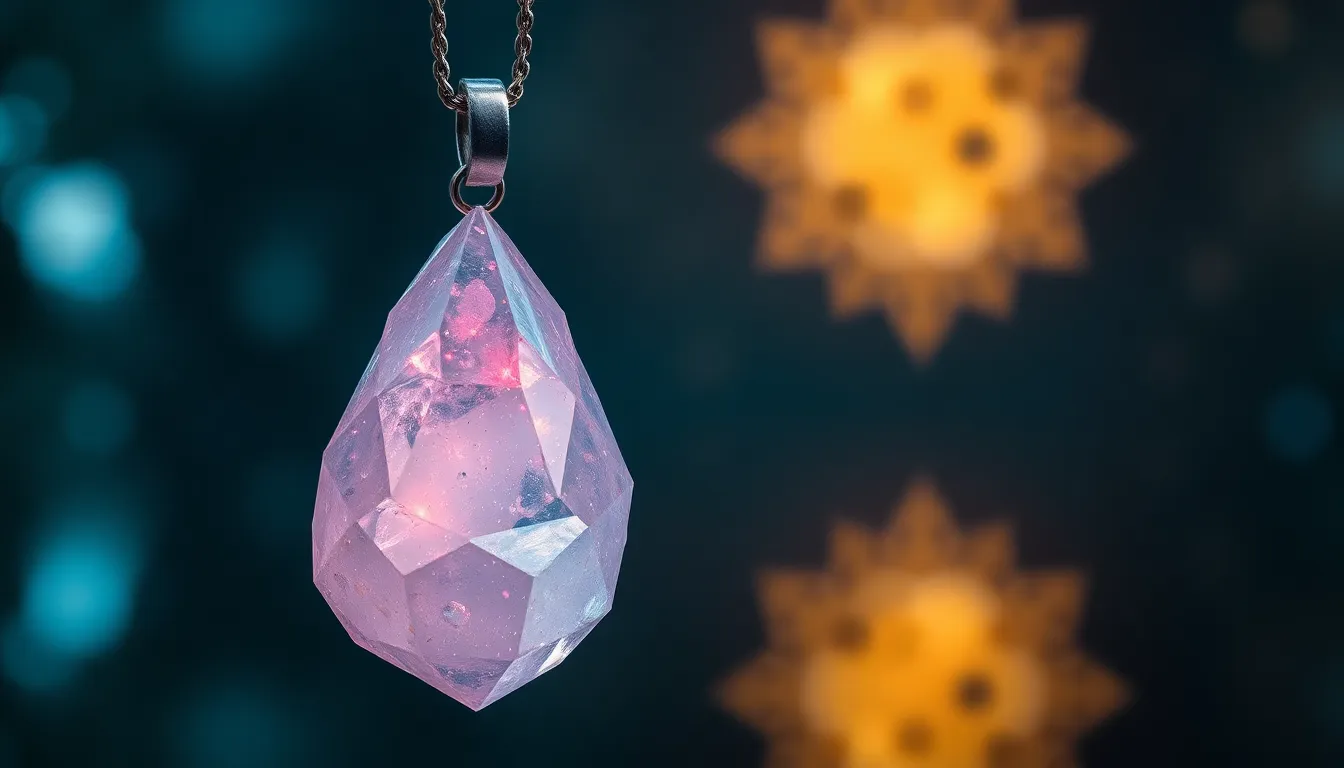The Crystal Pendant: Myths of Healing and Protection
1. Introduction to Crystal Pendants
Crystal pendants are decorative pieces of jewelry that feature various types of crystals, believed by many to possess healing and protective properties. The use of crystals can be traced back to ancient civilizations, where they were not only valued for their beauty but also for their purported metaphysical qualities. Throughout history, crystal pendants have held cultural significance across various civilizations, serving as talismans, symbols of power, or items of spiritual importance.
2. The Science Behind Crystals
Crystals are solid materials whose atoms are arranged in a highly ordered, repeating pattern, which gives them unique shapes and properties. The formation of crystals occurs through natural processes, such as cooling magma or evaporating mineral-rich water. Many crystals exhibit piezoelectric properties, meaning they can generate an electrical charge when subjected to mechanical stress. This phenomenon has led some researchers to explore potential applications in technology, but it also adds a scientific layer to the mystical beliefs surrounding crystals.
3. Historical Context of Healing Myths
Throughout history, many ancient civilizations believed in the healing properties of crystals. For instance, the Egyptians used lapis lazuli and turquoise in their jewelry and rituals, while the Greeks associated amethyst with sobriety and protection from intoxication. Key historical figures, such as Hildegard of Bingen and Paracelsus, contributed to the lore of crystals, advocating their use for physical and spiritual healing in their writings. These early beliefs laid the groundwork for modern crystal healing practices.
4. Popular Types of Healing Crystals Used in Pendants
Various crystals are favored for their unique properties and benefits. Here are some of the most popular types used in pendants:
- Amethyst: Known for its calming effects, amethyst is believed to promote clarity and spiritual growth.
- Rose Quartz: Often called the “love stone,” rose quartz is thought to open the heart to love and emotional healing.
- Clear Quartz: Known as a master healer, clear quartz is said to amplify energy and intention.
- Citrine: This cheerful stone is linked to abundance and positivity, often used to attract prosperity.
- Black Tourmaline: Renowned for its protective qualities, black tourmaline is believed to shield against negative energies.
5. Myths Surrounding Crystal Pendants
Despite their popularity, many myths and misconceptions about crystal healing persist. Some common misconceptions include:
- Crystals can cure diseases: While many people report benefits, crystals should not replace medical treatment.
- All crystals work the same for everyone: Individual experiences with crystals can vary significantly based on personal beliefs and energy.
- Crystals lose their power over time: Proper cleansing and care can maintain the energy of crystals.
Stories and folklore also surround crystal pendants, often linking them to ancient gods, spiritual practices, and fables that enhance their allure and mystique.
6. Psychological Effects of Wearing Crystal Pendants
The psychological impact of wearing crystal pendants should not be underestimated. The placebo effect plays a significant role in perceived healing; when individuals believe that a crystal will help them, they may experience real improvements in their well-being. Additionally, personal belief in the effectiveness of crystals can enhance their perceived benefits, leading to positive outcomes based on mindset rather than the crystals themselves.
7. Modern Uses of Crystal Pendants
In contemporary wellness practices, crystal pendants have become popular for those seeking holistic approaches to health and well-being. They are often incorporated into meditation, yoga, and mindfulness practices to enhance focus and intention. Beyond their spiritual applications, crystal pendants have also carved a niche in fashion, allowing individuals to express their personal style while embracing the metaphysical properties of the stones.
8. Protecting Against Negative Energies
The concept of energy fields and auras is central to many beliefs about the protective qualities of crystals. Some crystals, such as black tourmaline and obsidian, are specifically sought for their ability to ward off negative energies. These stones are thought to create a barrier, protecting the wearer from emotional and environmental stressors, and helping maintain a balanced energy field.
9. How to Choose the Right Crystal Pendant for You
Selecting the right crystal pendant involves considering several factors:
- Intention: Reflect on what you hope to achieve or enhance in your life, whether it be love, protection, or clarity.
- Personal Resonance: Choose a crystal that you feel drawn to or that resonates with you on a personal level.
Once you have chosen a pendant, it’s essential to cleanse and charge your crystal. This can be done through methods such as:
- Smudging with sage or palo santo.
- Placing the crystal in sunlight or moonlight.
- Burying the crystal in salt or earth overnight.
10. Conclusion: The Balance of Myth and Reality
The ongoing popularity of crystal pendants reflects a deep-rooted human desire for healing, protection, and connection to the earth. While many myths and misconceptions exist, personal experiences with crystal healing can be profound and meaningful. Exploring the world of crystal pendants invites individuals to reflect on their beliefs, intentions, and the ways in which these beautiful stones can enhance their lives. Whether viewed through a lens of spirituality or personal expression, crystal pendants continue to captivate and inspire.

